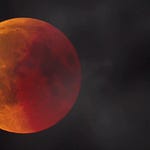Hello everyone!
This week on The Cosmic Companion, we look at What a Crazy Cosmos we live in, talking about some of the most bizarre objects in the Universe. Later on, we will be joined by Emily Fego from National Geographic, talking about Nat Geo’s new work, That’s Fact-Tastic!
Now, you may think that things around your neighborhood are weird, but your oddball neighbor is just peanuts compared to what’s in outer space.
Starting close to home (sort of), outside the edge of our planetary system, the dwarf planet Pluto is home to a massive heart stretching across much of its surface. This “Tombaugh Regio,” was first seen in images taken by the New Horizons spacecraft during its flyby of Pluto in July 2015.
Listen to the podcast version of the episode here, or watch it as a video!
Also at the edge of our planetary system, the egg-shaped dwarf planet Haumea rotates once every four hours — faster than any other known large object in the Solar System. Plus, it has two moons and a ring!
Saturn is home to a massive hexagon-shaped storm at its north pole. The eye of this gargantuan hurricane is 50 times larger than the eye of an average hurricane on Earth.
Speaking of which — our own planet has its own delightful little quirks, don’t it?
[<<<That’s a fact, Zack! That’s a fact, Zack!]
Next up, we talk with Nat Geo’s Emily Fego, about That’s Fact-Tastic, new from National Geographic Kids.
Astronomers now know of around 5,500 planets orbiting alien stars, some of which are pretty strange.
Roughly 64 light years from Earth sits HD 189733b, a tempting-looking blue planet that holds a terrible secret. That blue color is not water you’re seeing — that’s shards of glass whipping around the planet at 8,700 km/hr, nine times faster than the world’s fastest passenger jet.
If, for some strange reason, that doesn’t suit your vacation plans, there’s always WASP-76b — a world 635 light years from Earth, where it rains molten iron.
55 Cancri e may be a diamond the size of a planet. Research suggests that this world, more than 40 light years from Earth, might hold vast amounts of carbon at enormous pressures, creating a diamond with enough carrots to keep wise-cracking rabbits happy for their entire lifetimes.
[<<<Eehhh… I can eat a lot of carrots, Doc!]
And some planets do not orbit a star at all, spending eternity traversing the barren empty void alone, as rogue planets.
Dead stars create some of the oddest objects seen anywhere… well, anywhere!
[[<<<All that lives must die, Passing through nature to eternity…]]
At the end of their lives, stars significantly larger than our Sun can erupt in massive supernovae, and collapse onto themselves with such great force that positively-charged protons and negative electrons at their core are merged together, leaving only neutrons behind. These neutron stars, just the size of a city, are so dense that a single thimbleful of their material would weigh more than Mount Everest.
[Wow. Heavy!]
Stars even more massive than that can collapse into black holes. These bizarre features in space are so odd, they shouldn’t even be called objects.
The more massive and denser an object is, the faster one needs to travel in order to get away from the body. This is known as an escape velocity. For Earth, the velocity needed to get away from it all is a scooch over 11 km/sec. Trying to escape from a black hole, however, is a futile task, as even light, traveling at around 300,000 km/sec., is not fast enough to escape its grasp.
[>>>That’s what makes them black. And holes. Kinda.] Kinda.
Much like people, galaxies tend to gather together in groups. Those groups of galaxies can sometimes (but not always!) join together (along with a lot of hot gas) into galaxy clusters, which themselves can become segments of superclusters. The Laniakea supercluster (which includes you, me, and the rest of the Milky Way) contains about 100,000 galaxies, stretching 500 million light years from side-to-side.
Perhaps strangest of all is what we don’t see — and that is 95% of the Universe.
Dark matter warps spacetime, bending light, and shaping the paths of objects traveling through space. Nearly every galaxy is accompanied by vast quantities of dark matter, regions of gravity with nothing (apparently) to accompany them. This dark matter holds galaxies and groups of galaxies together, yet it cannot be seen.
Dark energy, on the other hand, appears as a repulsive force which, for the last several billion years, has been pushing the Universe apart.
Dark matter and dark energy have been studied for just a few short decades. Several ideas have surfaced attempting to describe these phenomena, but little is known about their underlying nature.
Every star in the Cosmos, every planet, every being, and every atom together makes up less than five percent of everything out there that we can see. Dark matter makes up around 25 percent of the total, while dark energy accounts for the remaining 70% of the Universe.
The fact that 95% of the Universe is largely unknown, and utterly invisible may be the craziest thing of all about this Crazy Cosmos.
Next week on The Cosmic Companion, we are looking at How Finding ET will Change Us All. We’ll be talking with Jamie Green, author of The Possibility of Life. Make sure to join us, starting on 13 May.
Sign up for our newsletter at TheCosmicCompanion.com and never miss an episode.
If you enjoyed this episode of The Cosmic Companion, please comment, download, and share our show all over social media, and tell your friends about it as well. That’d be just swell!
Clear skies!
James












Share this post